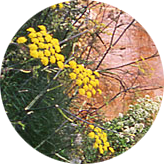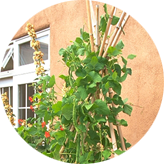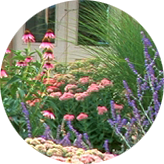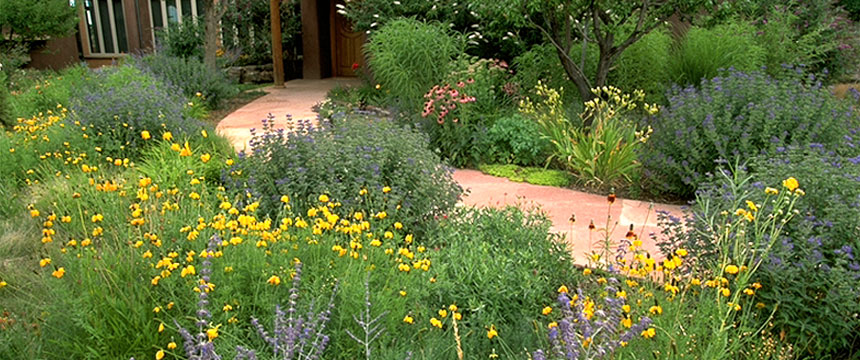
Companion Plantings
Whenever species are planted with a “companion planting” mentality, the design is no longer merely about the productivity of, say, one apple tree. It’s about at least seven layers of productivity in one guild where the whole becomes larger than the sum of its parts, as each species assists its neighbors.
Roll over circles above to see the full-sized image.
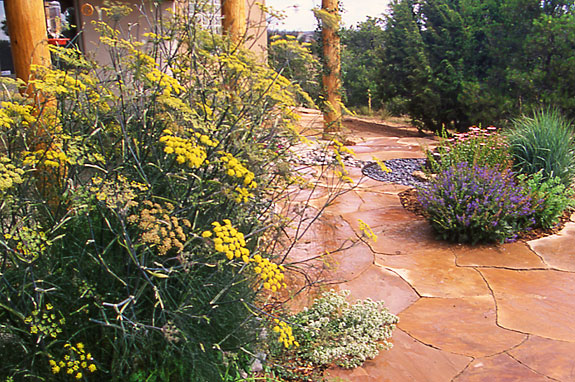
Companion planting can bring a great many functional advantages to your landscape—it's so much more than just attractive garden features.
- Living mulches (strawberries, rhubarb) combat weeds as they insulate the tree’s root zones, and increase mycelium.
- Nitrogen fixers (beans, peas) increase available nitrogen in the soil.
- A wide variety of flowering plants attract pollinators (bees).
- Umbelliferae (fennel, dill) bring beneficial insects such as ladybugs.
- Deep-rooted plants (horseradish) pump water and minerals from deep below the soil’s surface.
- Daffodils are said to deter gophers (no guarantees!).
- In the center is the fruit tree itself.
Might there be a place for a guild on your property?
